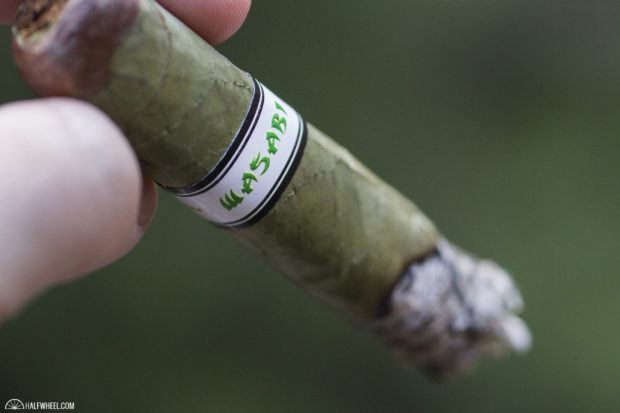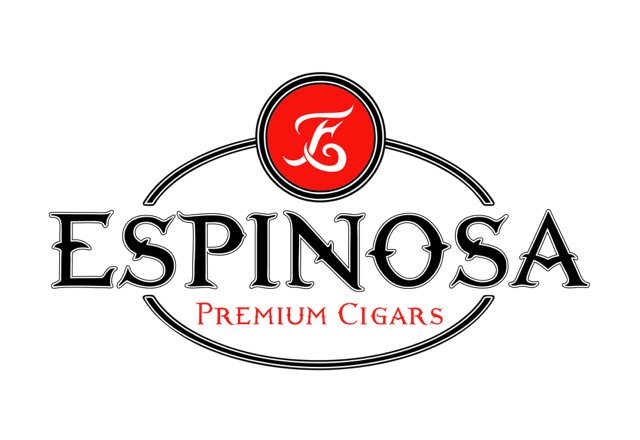It seems like not that long ago that new, unannounced cigars were flooding the market. They earned several names, including phantom brands on this site, as manufacturers sought to get their upcoming releases into the market and “commercially available” so that they would be in compliance with FDA guidelines when the time came to give them a proper release.
In November 2016, a series of cigars from Espinosa Premium Cigars began to come to light, eight cigars in all, collectively part of the company’s Backroom Series that were made available as exclusives to the Espinosa-branded lounges around the country.
One of those, the Espinosa Wasabi, seemed to catch on and earned a second release in mid-April. If you’re familiar with wasabi, which is a type of root vegetable best known for being served alongside sushi and sashimi, it’s often described as a Japanese horseradish and known for providing a distinctive spicy kick. However, not only is it a different plant from horseradish, most of the familiar green paste found at sushi bars is a combination of horseradish, mustard, starch and either green food coloring or spinach powder. This is due in part to several factors: first, authentic wasabi is expensive to grow as it requires very specific growing conditions and areas; it offers a level of spice that many American palates find to be simply too much; and when left uncovered it loses its flavor within about 15 minutes.
Since it is so immediately identifiable, there seemed to be some concern about just how much the cigar might taste like wasabi, and even if there was any wasabi flavoring added to the cigar. Erik Espinosa was quick to dispel these questions, saying numerous times that despite it being described as a “spicy candela,” he picked the name because he liked the word, and it tied in with the use of a candela wrapper.
While pretty much no specifics of the blend were released, one that was disclosed is that the wrapper is accented by a Nicaraguan habano tip.
For the second release, a total of 500 boxes of 10 cigars were produced, with the cigar returning in the 5 x 52 box-pressed robusto vitola and priced at $7.95 per cigar. It was also made available to all Espinosa accounts, not just the Espinosa-branded lounges.
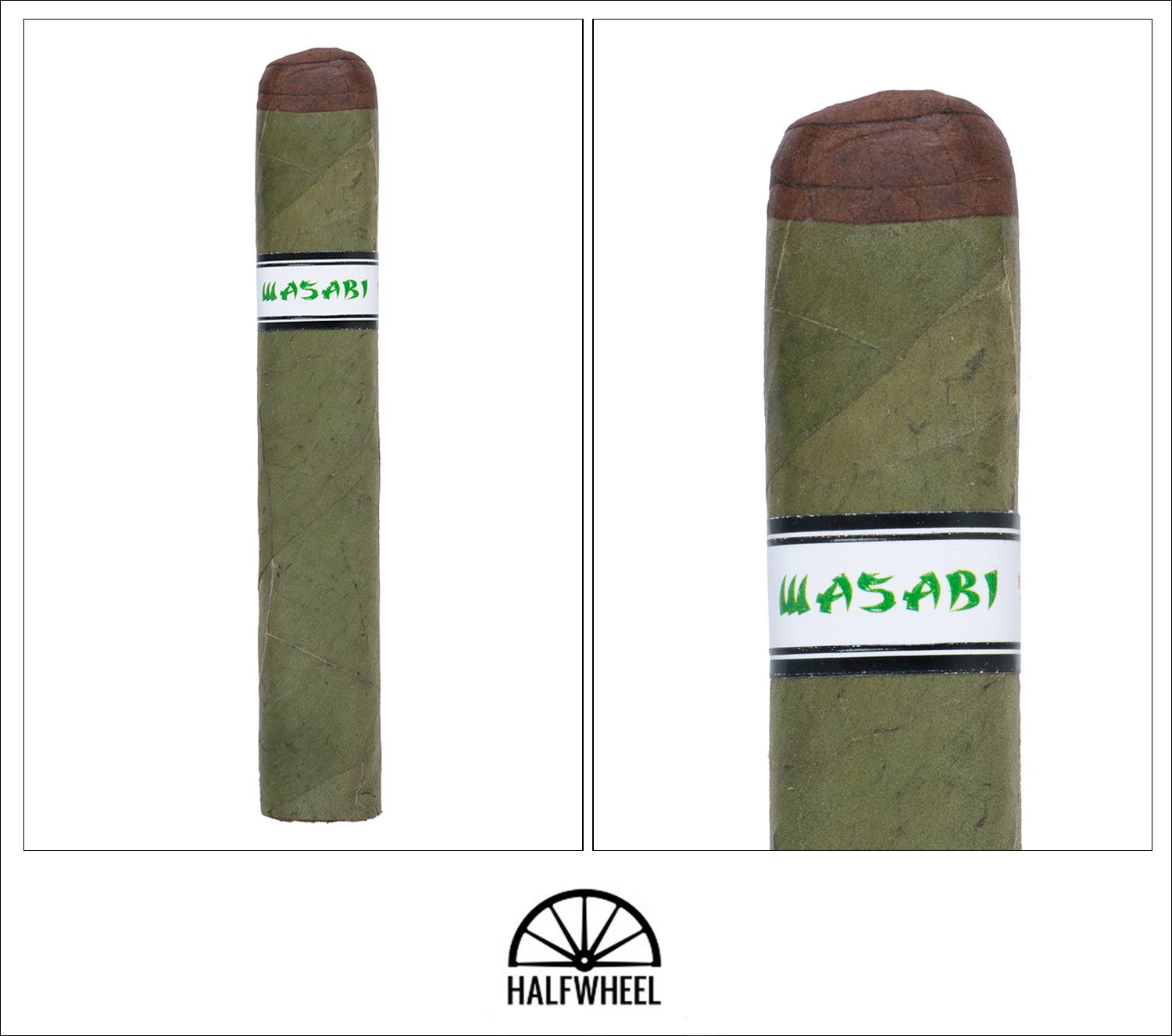
- Cigar Reviewed: Espinosa Wasabi (2018)
- Country of Origin: Nicaragua
- Factory: La Zona Cigar Factory
- Wrapper: n/a
- Binder: n/a
- Filler: n/a
- Length: 5 1/2 Inches
- Ring Gauge: 52
- Vitola: Robusto Extra
- MSRP: $7.95 (Boxes of 10, $79.95)
- Release Date: April 2018
- Number of Cigars Released: 500 Boxes of 10 Cigars (5,000 Total Cigars)
- Number of Cigars Smoked For Review: 3
To say that the Espinosa Wasabi offers a lot to take in visually would be an understatement; there’s the candela green leaf, or course, which simply by its color should have you spending a few moments with it. The contrasting dark brown habano leaf cap is the next thing to catch my eye, not just for its visual contrast, but because to the jagged lines where the cap was cut and applied. In the middle is the band, which in some ways looks like an Illusione band with the white base and black stripes, though the green Wasabi wordmark in an almost stereotypical Asian font sets it apart. The wrapper leaf has a ton of veins that create small ridges for the fingers, while the leaf itself is dry and smooth in between. The box press shape has a very familiar level of firmness, as there is some give to be found but for the most part it is uniformly well-packed. While I get some dry grassiness from the wrapper, the foot offers none of the typical candela notes, and is instead varying amount of peppery and sweet, with the first sample rich with brown sugar while the second and third leaned towards mint leaves. A clip of the cap reveals an interesting mix of brown and green tobacco, almost like mint chocolate candy, while the draw is a touch loose and the flavors on the milder side, offering a bit of chocolate brownie with the occasional mint note and mild sprinklings of pepper.
I’m making a promise to myself to avoid using the term wasabi to describe the flavors I get from the Espinosa Wasabi, mainly because I’m trying to avoid having my mind primed and steered in a certain direction. There is a good bit of spice and pepper to be found in the early puffs, initially black pepper but slowly changing into something different, mainly by way of the finish. It’s lighter and more fleeting than typical black pepper, though the strength and gravitas certainly are in line. In the first sample, it’s just ahead of the one inch mark that I begin to get the Wasabi’s first hit of distinct spice, and while I will still do everything I can to referring to it as a wasabi-like flavor, it is definitely different than what the cigar has offered previously and isn’t just a simply black, white or red pepper note. The finish is what sells it; if you’ve tried freshly grated wasabi and not just the common green paste, you’ll immediately understand the sensation; if not, I highly suggest trying it but know that the paste does a decent approximation. If you’re a retrohaler, you’ll pick this out even more distinctly, though some white pepper muddies the clarity, but the gist is more than there. While the spice and pepper have done most of the talking, the base notes feel a bit thin and underdeveloped, as trying to dive beyond that surface spice results in coming up largely empty-handed. As the Espinosa Wasabi approaches its second third, the distinctive spiciness begins to fade and gets replaced by a more traditional and robust Nicaraguan note of earth and black pepper, which both pick up in intensity with each puff and helps the base notes develop. While the cold draw was a bit loose, it hasn’t affected the performance of the cigar and now feels quite good, with an even burn line and decent smoke production. The durability of the ash isn’t the best, but it’s easy to accommodate it with some more frequent taps into the ashtray. Body is medium but developing, while strength is medium-full to full.
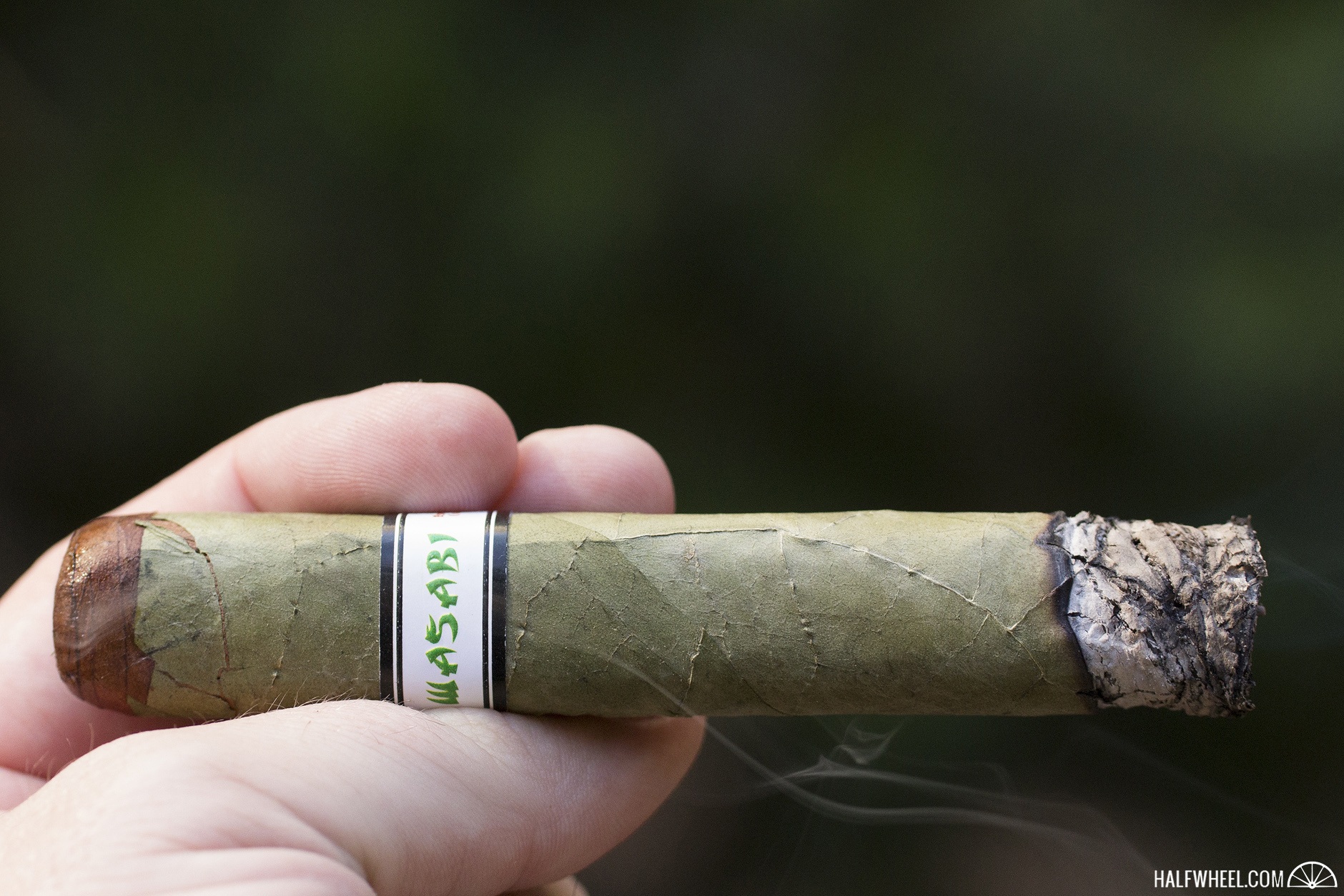
The start of the Espinosa Wasabi’s second third is definitely tempting me less to use the wasabi flavor descriptor. The progression into earthiness has slowed so that the cigar can take a deter into some dry woods, which dries out the palate just a bit and leaves a lingering tingle on the sides of the tongue. It holds this course for most of the second third, making it more of a detour until it doubles back to the earthiness and related heavier profile. The black pepper returns in earnest as well, though it feels a bit hotter on the tongue than it did earlier. Combustion starts to be more challenging, as the second third needs a few full relights in the second third to keep the process moving along.
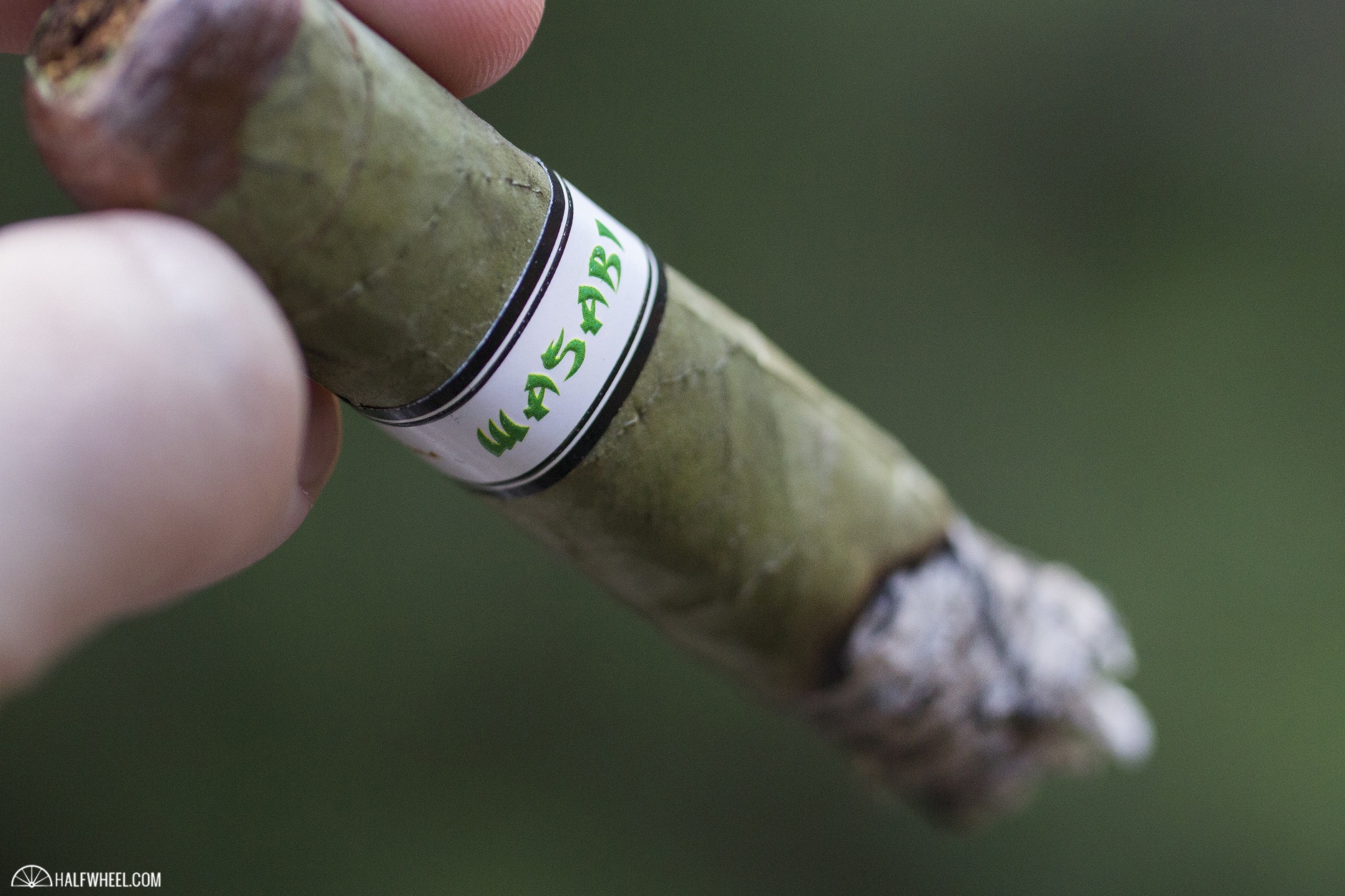
The final third of the Espinosa Wasabi keeps up the more robust, peppery profile that the cigar undertook at the end of the first third, but most notably, the cigar kicks the strength factor into high gear, imparting some serious nicotine punch. The wasabi connotation is now almost completely gone save for some of the distinctive spice to be found through a retrohale. Combustion issues are still present, which requires the lighter to come out and get things going again. A new note of coffee starts to develop, adding a bit of complexity to the profile, while some very subtle sweetness comes out of the strongest leaves in the blend providing just a bit of counterbalance. A bit of the candela grassiness materializes and lightens the profile ever so slightly, while the final puffs see a bit of the spiciness return. That does a good job shoving aside the pepper but isn’t enough to fully shake the earthy, rocky undertones of the profile. The final inch and a half into a red chili pepper bomb, capping off a spice-driven cigar that leaves the palate feeling well-worked but not quite punished.
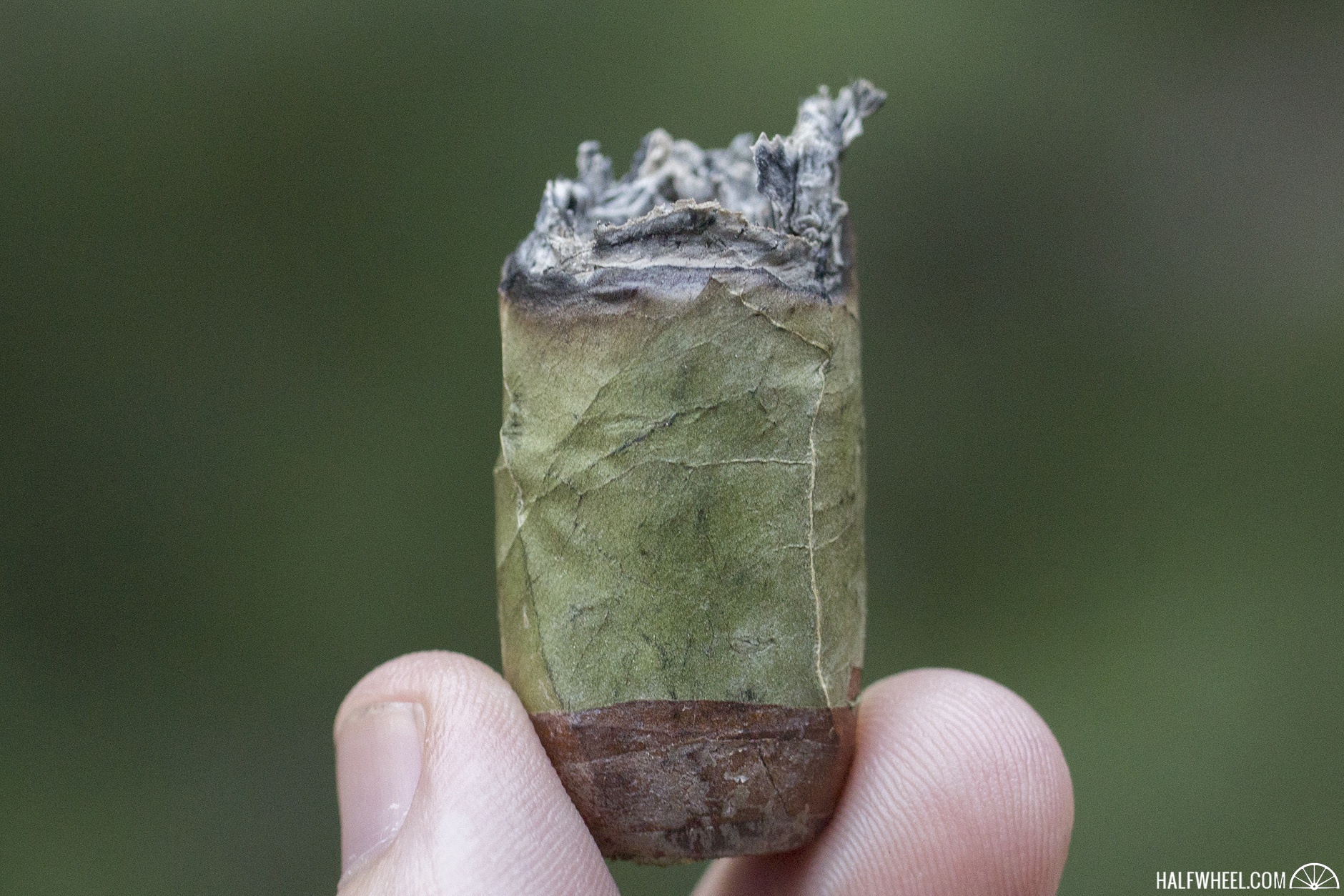
Final Notes
- One sample of the Espinosa Wasabi had some white water spots on the wrapper near the foot, which I was quite surprised to see on a premium cigar.
- While I think of candelas as generally being very easily combusting cigars, each of three samples of the Espinosa Wasabi had some burn issues and needing relighting, which seemed most likely due to the heavier tobaccos in the filler.
- Also contrary to typical candelas, the Espinosa Wasabi has a good bit more strength to be found in the final third, as I felt an increase in nicotine and the resulting physical effects.
- The Wasabi wasn’t the only of the eight Espinosa Backroom Series releases to make it into wide distribution, as the Reggae was released at the 2017 IPCPR Convention & Trade Show, complete with an offshoot cigar, the Espinosa Reggae Dread.
- The Espinosa Backroom Series launched in December 2014 with The Alibi.
- One place I’m always appreciative of finding high-quality wasabi outside of a Japanese restaurant is a steakhouse. While I’m not one to slather a $50 steak in it, I do appreciate it as a garnish to use in restraint.
- While I’m not a font geek, I was intrigued to see if I could find the name of the font used on the band, and it appears to be one called Karate.
- And simply for your enjoyment, the famous Budweiser “Wasabi” commercial.
- The cigars for this review were purchased by halfwheel.
- Final smoking time was one hour and 35 minutes on average.
- Site sponsors Famous Smoke Shop and Corona Cigar Co. carry the Espinosa Wasabi.
The Espinosa Wasabi didn't come with the billing of being "not your father's candela" or "the next generation of candela," but instead simply with a name that suggested it would be green and spicy, and for the most part, that is exactly what it is. The first third is the only one that led me to entertain the idea of the cigar having a wasabi-like spiciness, and whether it be the name leading the mind or the tobacco itself, there is a respectable execution of the type of physical sensation that wasabi generates. After that first third, the cigar abandons its name to become a more traditionally Nicaraguan profile, medium-full bodied with plenty of earth and pepper, whether or not that's actually what's being used in the blend. The Espinosa Wasabi is a better than decent cigar that doesn't show any rough spots, smokes fairly quickly despite some burn issues, and leaves a lasting punch of strength in its wake.

